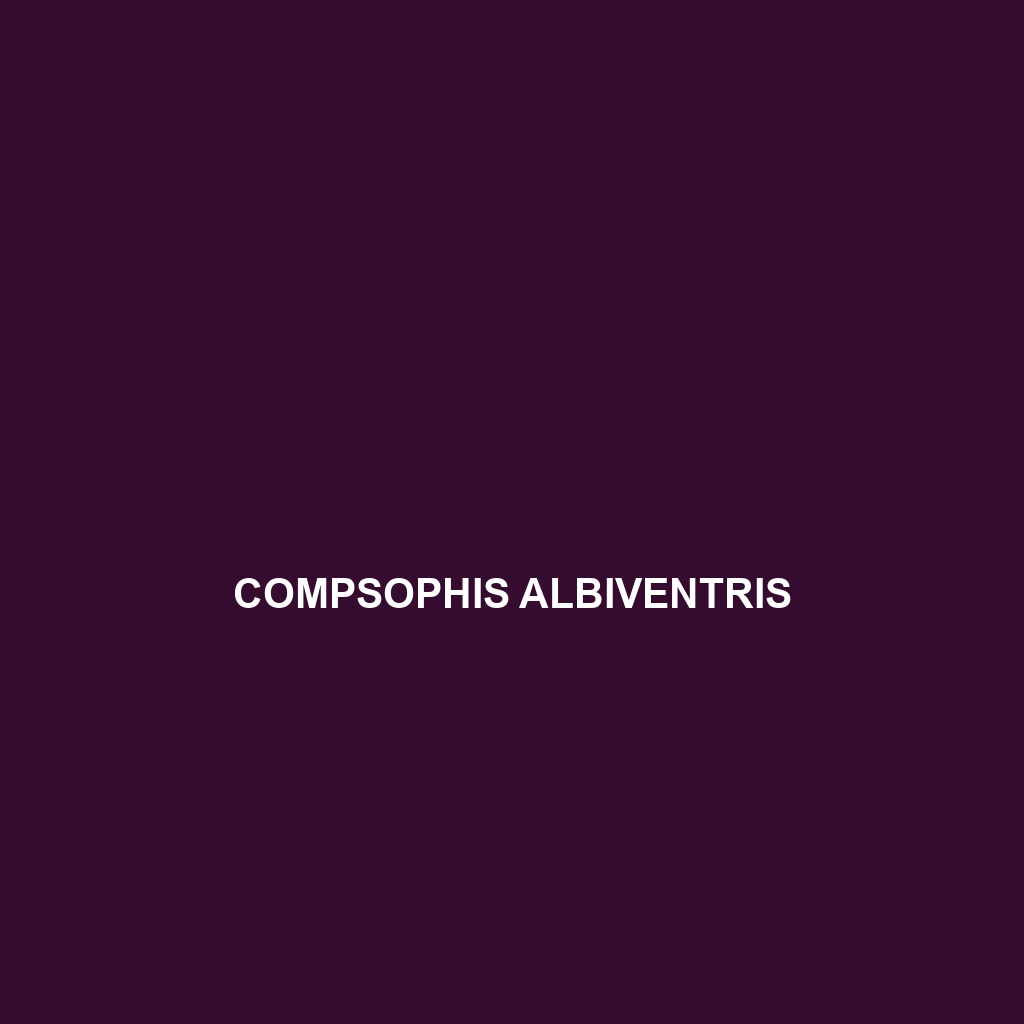Species Description: Coniophanes schmidti Common Name: Coniophanes schmidti Scientific Name: Coniophanes schmidti Habitat Coniophanes schmidti is primarily found in the tropical forests of Central America, particularly in regions such as southern Mexico, Belize, and Guatemala. This species typically inhabits humid, lowland forest environments where it can thrive in the dense underbrush and leaf litter. The […]
Tag: rainforest ecology
Compsophis albiventris
Discover the Compsophis albiventris, or White-bellied Snake, a nocturnal species found in Madagascar's tropical rainforests, known for its slender body, distinctive white belly, and diet of small amphibians and lizards. Listed as vulnerable due to habitat loss, this snake plays a crucial role in maintaining the ecosystem's balance.
Corallus grenadensis
Species Description: Corallus grenadensis Common Name: Corallus grenadensis Scientific Name: Corallus grenadensis Habitat: Corallus grenadensis, commonly known as the Grenada tree boa, is primarily found in the lush rainforests of Grenada, a Caribbean island. This species thrives in humid environments, typically inhabiting lowland forests and secondary growth regions. The Grenada tree boa is often spotted […]
Copeoglossum margaritae
Discover the vibrant Copeoglossum margaritae, a slender lizard native to the humid tropical forests of Panama and Costa Rica, known for its striking green, yellow, and black patterns. This diurnal insectivore plays a vital role in its ecosystem, controlling insect populations while showcasing fascinating behaviors, including territorial displays during mating season.
Comptus stenurus
<h2>Comptus stenurus - Tropical Rainforest Species</h2> <p><b>Common Name:</b> Comptus stenurus | <b>Conservation Status:</b> Vulnerable</p> <p>This vibrant Southeast Asian species, measuring 15-20 cm, thrives in humid tropical rainforests, showcasing unique camouflage and social behaviors. An omnivore, it plays a vital role in its ecosystem through seed dispersal and insect predation.</p>
Chironius diamantina
Discover the vibrant Chironius diamantina, or Diamantina Snake, a stunning species native to the tropical rainforests of South America. With its striking green body and unique black bands, this agile, diurnal snake is a vital predator of frogs and lizards, contributing to the ecosystem's biodiversity.
Chapinophis xanthocheilus
Discover the captivating Chapinophis xanthocheilus, a striking yellowish-gold snake native to the humid rainforests of Central Africa, known for its nocturnal habits, elusive nature, and role as a key predator of small amphibians and reptiles. With its unique coloration and ability to adapt to its environment, this vulnerable species is essential to maintaining the delicate balance of rainforest ecosystems.
Celestus striatus
This striped skink (Celestus striatus) is a resilient diurnal lizard found in the tropical forests of the Caribbean, characterized by its bold dark stripes and agile climbing ability. Growing up to 30 cm, it plays a crucial role in controlling insect populations while facing threats from habitat loss and predation.
Calumma tjiasmantoi
Discover the vibrant Calumma tjiasmantoi, a striking chameleon native to Madagascar's rainforests, known for its vivid color variations, robust body, and unique ability to camouflage. This arboreal species plays a crucial role in its ecosystem by controlling insect populations and is currently classified as vulnerable due to habitat loss.
Calamophis jobiensis
<p><b>Calamophis jobiensis</b> is a nocturnal, arboreal snake native to the tropical rainforests of Papua New Guinea, reaching lengths of 40 to 60 centimeters and displaying vibrant green, yellow, and black patterns for camouflage. This carnivorous species plays a vital role in its ecosystem, helping to regulate the populations of small mammals and birds while being classified as vulnerable due to habitat loss.</p>









